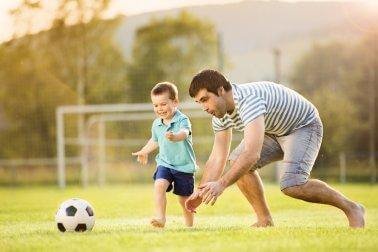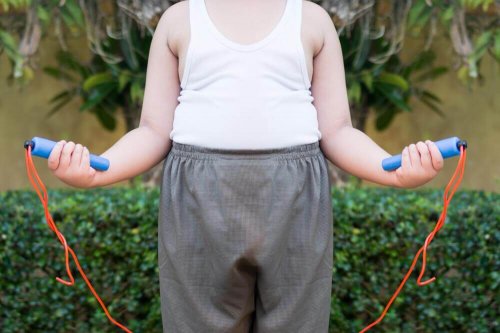Fun Exercises to Fight Childhood Obesity

Childhood obesity has become one of the most serious health challenges. It’s necessary to be aware of the seriousness of the issue to reduce the risk of many diseases that result from obesity.
In this article, we’ll share some fun exercises to fight childhood obesity.
Exercises to Fight Childhood Obesity
The foundations of a healthy lifestyle are diet and exercise. Thus, you must be well informed and make sure your child doesn’t lead a sedentary lifestyle. This way, your child will grow with more intellectual and physical stimuli and will understand the importance of taking care of the body.
That said, let’s take a look at some of the best and most fun exercises to help children stay in shape.
1. Martial arts
There are many different martial arts. You can choose one depending on the child’s age and the goal you intend to achieve. This type of exercise allows children to have fun and lose weight while learning discipline, respect, perseverance, control of their body, and self-defense at the same time.
No matter what, you should instill in them the importance of stretching and warming up before starting any physical activity (in this case, the martial art you choose for them). This way, they’ll reduce the risk of injury and maximize their effort and results.
Martial arts are high-performance sports that help children burn calories and lose weight naturally within a few months.
You should also read: 5 Sports That Offer Multiple Health Benefits
2. Soccer
Soccer is the perfect sport for children because they really enjoy it. Although there are other good alternatives, soccer is a very effective sport to fight childhood obesity. In addition, soccer promotes teamwork, speed, skill, effort, strategy, and intelligence.

Another advantage of this sport is that it’s usually practiced in open outdoor spaces. Practicing soccer allows children to avoid physical inactivity. A soccer ball is a great gift for any child!
3. Swimming
Swimming is an ideal sport for any age, but it’s especially recommended for children. Converting physical activity into a game makes children not see it as an obligation and, therefore, they’ll be more motivated to practice it.
It’s imperative that a qualified adult constantly monitors a child who’s practicing a water activity, especially if they’re in a private pool where there are no lifeguards.
Swimming is one of the most complete sports and exercises the entire body. In addition to aiding weight loss, it helps children boost their self-confidence since they have to be in a bathing suit in front of other children.
4. Jumping Rope

One of the traditional games that burns a lot of calories is jumping rope. Thus, it’s no surprise why boxers from all around the world jump rope as part of their training. Jumping rope exercises the abdominal and leg muscles, boosts endurance, and improves heart function.
This is why this game has evolved so much in recent years. Using music to accompany the activity helps make it more enjoyable and motivates the child to sing along. Jumping rope also develops rhythm, coordination, endurance, and motor skills.
5. Hula Hoop
This is one of the most popular games worldwide. It consists of spinning a plastic hoop around the waist without letting it fall. To do so, you can only move your hips. This movement is precisely what makes it a very interesting and fun game to fight childhood obesity.
Before you go, don’t miss: The Best Tips for Teaching Children How to Swim
Hula hooping exercises coordination, flexibility, endurance, rhythm, and balance, while also helping children lose weight.
All cited sources were thoroughly reviewed by our team to ensure their quality, reliability, currency, and validity. The bibliography of this article was considered reliable and of academic or scientific accuracy.
- Isidoro, S. G., Tobal, F. M., Escudero, P. M., Ortega, C. G., & Sánchez, V. O. C. (2014). Las artes marciales, su origen y actualidad: Una visión enfocada en el Judo, Karate y Wushu. Orientando, (8). https://orientando.uv.mx/index.php/orientando/article/view/1563
- Rodríguez, C. C. (2011). La importancia de la práctica de la natación en la educación de los niños y las niñas. Lecturas: Educación física y deportes, (161), 8. https://dialnet.unirioja.es/servlet/articulo?codigo=4189891
- Seo, K. (2017). The effects of dance music jump rope exercise on pulmonary function and body mass index after music jump rope exercise in overweight adults in 20’s. Journal of physical therapy science, 29(8), 1348-1351. https://www.jstage.jst.go.jp/article/jpts/29/8/29_jpts-2017-207/_pdf/-char/ja
This text is provided for informational purposes only and does not replace consultation with a professional. If in doubt, consult your specialist.








